This stream carries sediment that has weathered from nearby mountains at Polychrome Pass, Alaska.
Click on image for full size
Courtesy of Bruce Molnia, Terra Photographics
Step 2: Erosion and Transport (Sediments on the Move!)
Sneeze into a pile of dust and the particles fly everywhere. Sneeze into a pile of rocks and they stay put. Thatís because they have more mass. You need more force than a sneeze to move those rocks. Wind and water can have enough force to move rocks. Just compare whatís on the bottom of a fast moving river with whatís at the bottom of a calm lake. The fast moving river will carry away the smaller sediments leaving large gravel and even boulders. The calm lake allows even very small sediments carried in the water to settle to the bottom.
Moving water in rivers and moving air in wind sort particles by size. Larger particles can be carried in a stronger current, like fast moving water. Very small particles like silt and clay settle very slowly and so they only form layers at the bottom of quiet water areas like lakes, swamps, or lagoons.
The size of the sediments in a clastic sedimentary rock usually relates directly to the energy of the wind or water that they were deposited in. Particles that can sink to the bottom in a fast moving river must be very large and heavy. Smaller particles are carried away. However, in a calm lake, even very small pieces of sediment are able to settle to the bottom.
Last modified August 25, 2003 by Lisa Gardiner.
You might also be interested in:
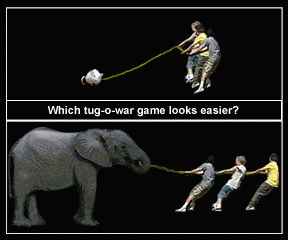
Would it be more difficult to pull an elephant or a mouse? If you pulled each animal with the same amount of force, the elephant would respond less to pulling, even if he didnít pull back at all. Thatís
...more
Wind is moving air. Warm air rises, and cool air comes in to take its place. This movement creates different pressures in the atmosphere which creates the winds around the globe. Since the Earth spins,
...more
Rivers are very important to Earth because they are major forces that shape the landscape. Also, they provide transportation and water for drinking, washing and farming. Rivers can flow on land or underground
...more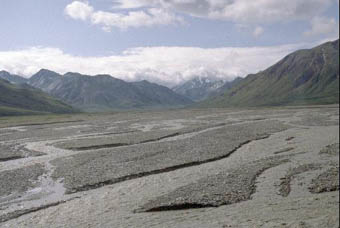
Sneeze into a pile of dust and the particles fly everywhere. Sneeze into a pile of rocks and they stay put. Thatís because they have more mass. You need more force than a sneeze to move those rocks. Wind
...more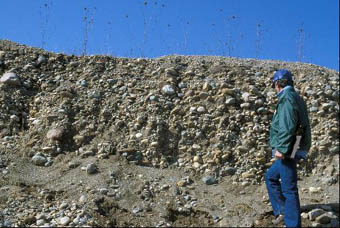
When water or wind loses energy and slows down, sediment can no longer be carried in it. The particles of sediment fall through the water or air and form a blanket of sediment on the bottom of a river,
...more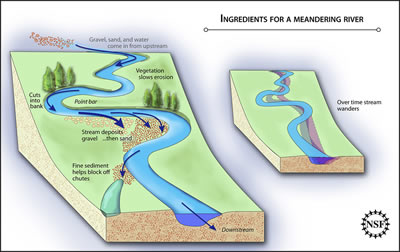
In a feat of reverse-engineering, Christian Braudrick of University of California at Berkeley and three coauthors have successfully built and maintained a scale model of a living meandering gravel-bed
...more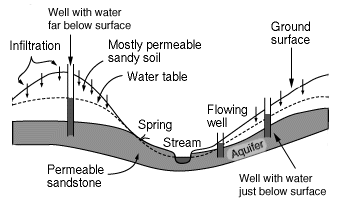
An aquifer is the name for a layer of rock which is capable of holding a large amount of water. Some layers are better at holding water than others, for example a layer of sandstone can hold a good deal
...more














